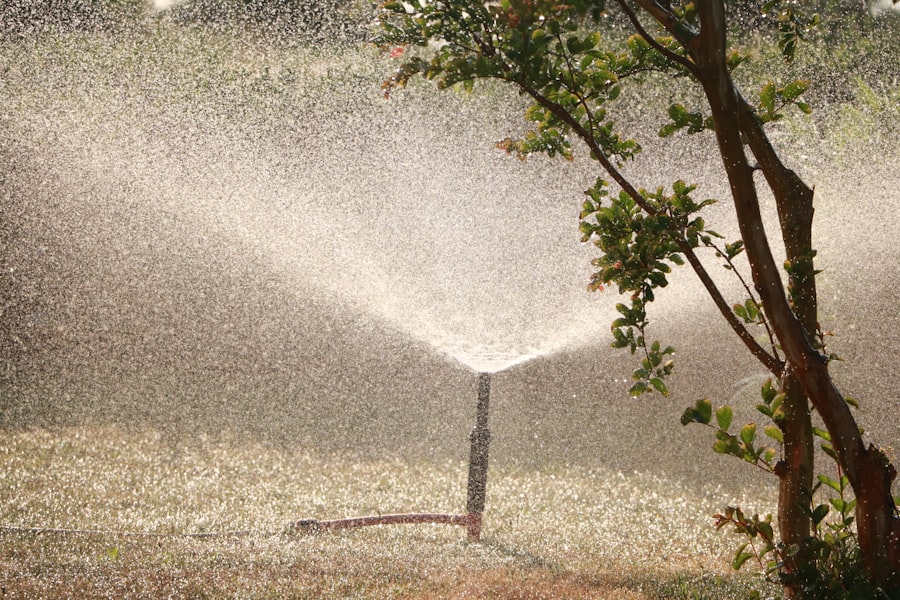Bobcats (Lynx rufus) are common predators of chickens in rural and suburban areas. These medium-sized wild cats are skilled hunters, known for their stealth and agility. They can easily infiltrate chicken coops or runs undetected.
Bobcats are excellent climbers, capable of scaling fences and trees to access poultry. Primarily nocturnal, bobcats are most active at night when chickens are roosting and vulnerable. Their keen senses of sight and hearing allow them to detect and track prey from a distance.
As solitary hunters, bobcats typically target individual chickens without alerting the entire flock. Chickens are natural prey for bobcats due to their size and vulnerability. Bobcats, being opportunistic hunters, are attracted to the easy meals that enclosed chicken coops and runs provide.
The sounds and movements of chickens can draw bobcats to a property from afar. Once inside a coop or run, bobcats can cause significant damage and stress to the flock, potentially resulting in injuries or fatalities. Understanding the threat bobcats pose to chickens is essential for implementing effective predator control measures to protect poultry.
Farmers and chicken owners should be aware of this risk and take appropriate precautions to safeguard their flocks from bobcat predation.
Table of Contents
- 1 Creating a secure coop and run
- 2 Utilizing deterrents and scare tactics
- 3 Implementing predator-proof fencing
- 4 Removing potential attractants
- 5 Monitoring and securing the property
- 6 Seeking professional help if necessary
- 7 FAQs
- 7.1 What are bobcats and why are they a threat to chickens?
- 7.2 What are some ways to keep bobcats away from my chickens?
- 7.3 Are there any natural deterrents that can keep bobcats away from my chickens?
- 7.4 What should I do if I encounter a bobcat near my chickens?
- 7.5 Are there any legal methods for dealing with bobcats that are threatening my chickens?
Key Takeaways
- Bobcats pose a threat to chickens as they are natural predators
- A secure coop and run are essential for protecting chickens from bobcats
- Deterrents and scare tactics can help keep bobcats away from the coop
- Predator-proof fencing is crucial for preventing bobcats from accessing the chickens
- Removing potential attractants such as food scraps can help reduce the risk of bobcat attacks
- Regular monitoring and securing of the property can help prevent bobcat attacks
- Professional help should be sought if necessary to address bobcat threats
Creating a secure coop and run
Inspect and Reinforce the Coop and Run
To safeguard your chickens from bobcats, it is crucial to create a secure coop and run that is designed to keep predators out. Start by inspecting the existing structure for any potential entry points such as gaps, holes, or weak spots that could be exploited by bobcats. Repair any damage and reinforce the coop and run with sturdy materials such as hardware cloth or welded wire to prevent bobcats from gaining access.
Seal All Openings and Add Predator-Proof Latches
Ensure that all openings, including doors, windows, vents, and gaps between panels, are securely sealed to eliminate any potential entry points for bobcats. Consider adding predator-proof latches and locks to all doors and openings to further secure the coop and run.
Create a Predator-Proof Perimeter
In addition to fortifying the physical structure of the coop and run, it is important to create a predator-proof perimeter around the entire enclosure. This can be achieved by burying hardware cloth or welded wire at least 12 inches deep around the perimeter of the coop and run to prevent bobcats from digging underneath. Install a sturdy roof or cover over the entire enclosure to prevent bobcats from climbing or jumping over the fence.
A Safe and Protected Environment for Your Chickens
Creating a secure coop and run is essential for providing your chickens with a safe and protected environment where they can roost, forage, and lay eggs without the threat of bobcat predation.
Utilizing deterrents and scare tactics

In addition to creating a secure coop and run, utilizing deterrents and scare tactics can help discourage bobcats from approaching your property. One effective method is to install motion-activated lights and sound devices around the perimeter of the coop and run. These devices can startle bobcats with sudden bursts of light and noise, making them think twice about approaching your chickens.
Another option is to use predator decoys such as fake owls or coyotes to create the illusion of a larger predator presence in the area, which can deter bobcats from coming too close. You can also consider using natural deterrents such as strong-smelling plants or herbs around the perimeter of the coop and run to repel bobcats. Plants like lavender, rosemary, or mint emit strong scents that can mask the smell of chickens and deter bobcats from approaching.
Additionally, spreading predator urine or feces around the perimeter can create a natural barrier that signals to bobcats that the area is already claimed by another predator. Utilizing deterrents and scare tactics in combination with a secure coop and run can help create a hostile environment for bobcats, reducing the likelihood of predation on your chickens.
Implementing predator-proof fencing
Predator-proof fencing is an essential component of protecting your chickens from bobcats and other predators. When it comes to fencing, it is important to choose materials that are strong, durable, and resistant to climbing or digging by bobcats. Hardware cloth or welded wire with small mesh openings is recommended for creating a predator-proof barrier around the perimeter of the coop and run.
The fencing should be at least 6 feet tall to prevent bobcats from jumping over, with an additional 2 feet buried underground to deter digging. To further reinforce the fencing, consider adding an outward-facing overhang or “coyote roller” at the top of the fence to prevent bobcats from climbing over. This can be achieved by attaching PVC pipes or metal bars along the top of the fence that spin freely when a predator tries to climb on them, making it difficult for bobcats to gain a foothold.
Regularly inspect the fencing for any signs of damage or weakness, and promptly repair any issues to maintain its effectiveness in keeping bobcats out. Implementing predator-proof fencing is a crucial step in creating a secure perimeter around your chickens’ living space, providing them with essential protection from bobcat predation.
Removing potential attractants
In addition to physical barriers and deterrents, it is important to remove potential attractants that could draw bobcats to your property in the first place. This includes securing food sources such as chicken feed, grains, or scraps in tightly sealed containers that are stored indoors or in predator-proof bins. Avoid leaving food out in the open where it can attract bobcats and other wildlife looking for an easy meal.
Keep the area around the coop and run clean and free of debris that could provide cover for bobcats or other predators. It is also important to minimize hiding spots for bobcats by keeping vegetation trimmed and removing brush piles, tall grasses, or dense shrubbery near the coop and run. By reducing potential hiding spots, you can make it more difficult for bobcats to approach undetected and increase the visibility of your property.
Removing potential attractants not only helps deter bobcats from coming near your chickens but also promotes a cleaner and safer environment for your flock to thrive in.
Monitoring and securing the property

Conducting Regular Inspections
Install security cameras around the property to keep an eye on any nocturnal activity and monitor for signs of bobcat presence near the coop and run.
Securing Your Property with Proper Lighting
In addition to monitoring, securing the property with proper lighting can help deter bobcats from approaching. Install motion-activated lights around the perimeter of the coop and run to illuminate any movement during the night, making it more difficult for bobcats to approach undetected. Consider using timers or solar-powered lights to ensure consistent coverage throughout the night.
Staying Ahead of Potential Threats
By actively monitoring and securing your property, you can stay one step ahead of potential threats and take proactive measures to protect your chickens from bobcat predation.
Seeking professional help if necessary
If despite your best efforts, you continue to experience issues with bobcat predation on your chickens, it may be necessary to seek professional help. Contacting local wildlife authorities or animal control agencies can provide you with valuable resources and guidance on how to address bobcat conflicts in a safe and humane manner. They may be able to offer assistance in trapping and relocating problem bobcats that pose a threat to your chickens.
Additionally, consulting with wildlife experts or experienced trappers can provide you with valuable insights into effective predator control strategies specific to your area. They can offer advice on advanced deterrent methods, trap placement, or other non-lethal measures that can help mitigate bobcat predation on your chickens. Seeking professional help when dealing with persistent predator issues demonstrates a commitment to finding sustainable solutions that prioritize both the safety of your flock and the conservation of local wildlife populations.
In conclusion, understanding the threat that bobcats pose to your chickens is crucial for implementing effective predator control measures. Creating a secure coop and run, utilizing deterrents and scare tactics, implementing predator-proof fencing, removing potential attractants, monitoring and securing the property, and seeking professional help if necessary are all essential steps in protecting your flock from bobcat predation. By taking proactive measures and staying vigilant, you can create a safe and protected environment for your chickens to thrive in while minimizing the risk of encounters with these stealthy predators.
If you’re looking for more tips on keeping your chickens safe, check out this article on turning a shed into a chicken coop. It offers valuable insights on creating a secure and comfortable space for your chickens to thrive.
FAQs
What are bobcats and why are they a threat to chickens?
Bobcats are wild cats native to North America. They are a threat to chickens because they are natural predators and will hunt and kill small animals, including chickens.
What are some ways to keep bobcats away from my chickens?
Some ways to keep bobcats away from your chickens include securing your chicken coop with sturdy fencing, using motion-activated lights or sound deterrents, and keeping your chickens in a secure enclosure or run during the night.
Are there any natural deterrents that can keep bobcats away from my chickens?
Some natural deterrents that may help keep bobcats away from your chickens include using strong-smelling plants like lavender or mint around your coop, or using predator urine or hair from larger animals as a deterrent.
What should I do if I encounter a bobcat near my chickens?
If you encounter a bobcat near your chickens, it’s important to stay calm and not approach the animal. Make loud noises, wave your arms, and try to make yourself appear larger to scare the bobcat away. If the bobcat does not leave, contact your local wildlife authorities for assistance.
Are there any legal methods for dealing with bobcats that are threatening my chickens?
In some areas, it may be legal to trap or remove bobcats that are posing a threat to your chickens. However, it’s important to check with your local wildlife authorities to ensure that you are following the proper legal procedures for dealing with bobcats.
Meet Walter, the feathered-friend fanatic of Florida! Nestled in the sunshine state, Walter struts through life with his feathered companions, clucking his way to happiness. With a coop that’s fancier than a five-star hotel, he’s the Don Juan of the chicken world. When he’s not teaching his hens to do the cha-cha, you’ll find him in a heated debate with his prized rooster, Sir Clucks-a-Lot. Walter’s poultry passion is no yolk; he’s the sunny-side-up guy you never knew you needed in your flock of friends!







